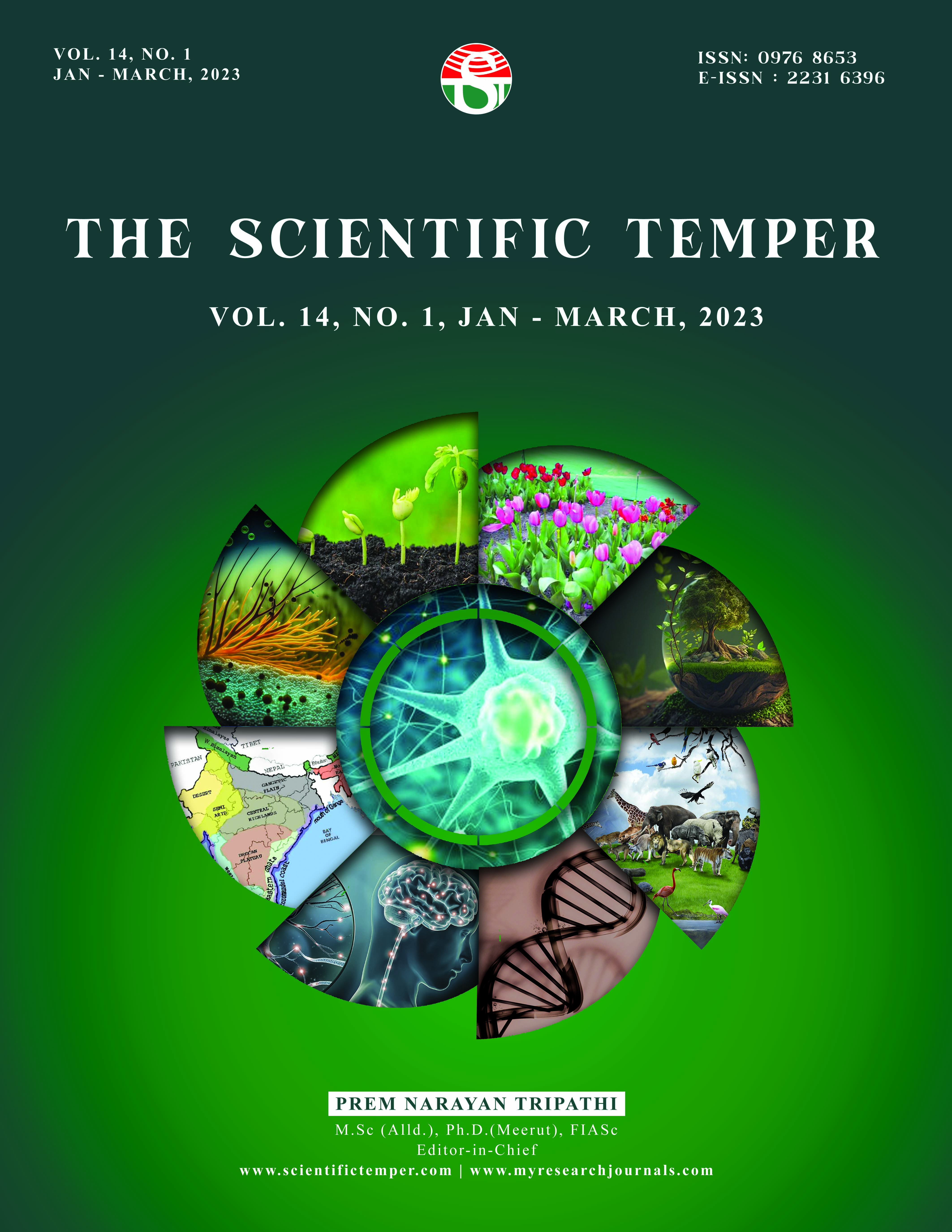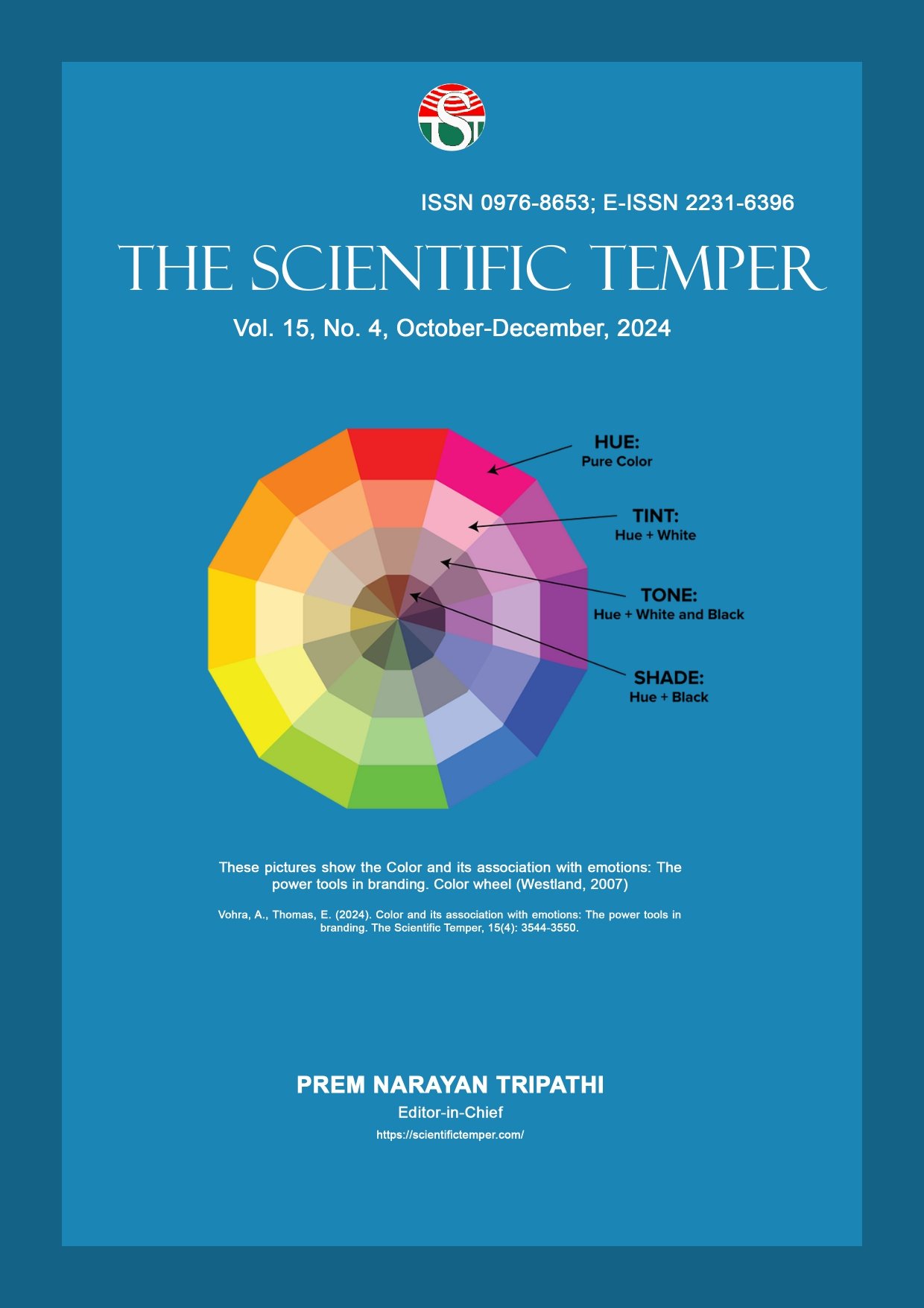Challenges and opportunities in product development using natural dyes
Downloads
Published
DOI:
https://doi.org/10.58414/SCIENTIFICTEMPER.2023.14.1.26Keywords:
Dyeing, Natural material, Effluent parameters, Eco-friendly, Sustainable.Dimensions Badge
Issue
Section
Dyeing is a crucial textile technology procedure and one of the most enjoyable Textile Arts. Dyeing is an ancient art form that predates our civilization. All over the world the coloring of textile material is done with bleached fabric using natural and synthetic dyes. Coloring with natural materials is now commonly used as a supplement to hand spinning, knitting, and weaving. This study aims to compare the effluent properties of synthetic and natural dyes. Additionally, a product was created utilizing natural dyes because they are safe for the environment.Abstract
This research article compares effluent parameters for natural and artificial dyes used for dyeing cotton fabrics, with a focus on fastness attributes, because while colouring the textile materials not all dyes are transfer, around 10-15% of dyes will remains in dye bath itself. When this effluent discharge, it is intensely colorful and aesthetically unpleasant and it will produce environmental problems.
How to Cite
Downloads
Similar Articles
- Dushyant Dave, Naresh Vyas, Impact of Textile Effluents on Soil in and Around Pali, Western Rajasthan, India , The Scientific Temper: Vol. 13 No. 01 (2022): The Scientific Temper
- A.P. Asha Sapna, C. Anbalagan, Towards a better living environment-compressive strength and water absorption testing of mini compressed stabilized earth blocks and fired bricks , The Scientific Temper: Vol. 14 No. 04 (2023): The Scientific Temper
- Rajesh Kumar Sharma, Amrendra Jha, ECOLOGICAL SCREENING OF SHATIYA WETLAND IN RELATION TO AGRICULTURAL PRODUCTIVITY , The Scientific Temper: Vol. 9 No. 1&2 (2018): The Scientific Temper
- K Sreenivasulu, Sameer Yadav, G Pushpalatha, R Sethumadhavan, Anup Ingle, Romala Vijaya, Investigating environmental sustainability applications using advanced monitoring systems , The Scientific Temper: Vol. 14 No. 04 (2023): The Scientific Temper
- M. Menaha, J. Lavanya, Crop yield prediction in diverse environmental conditions using ensemble learning , The Scientific Temper: Vol. 15 No. 03 (2024): The Scientific Temper
- Ravi Kumar P, C. Gowri Shankar, Optimizing power converters for enhanced electric vehicle propulsion: A novel research methodology , The Scientific Temper: Vol. 15 No. 04 (2024): The Scientific Temper
- A.K. SHARMA, R.B. SHARMA, ALGAL FLORA OF ALCOHAL DISTILLERY EFFLUENT , The Scientific Temper: Vol. 3 No. 1&2 (2012): The Scientific Temper
- Abhishek K Pandey, Amrita Sahu, Ajay K Harit, Manoj Singh, Nutritional composition of the wild variety of edible vegetables consumed by the tribal community of Raipur, Chhattisgarh, India , The Scientific Temper: Vol. 14 No. 01 (2023): The Scientific Temper
- Simeon P, Vijayalakshmi D, Design and development of wall hanging and plant hangers using tie and dye , The Scientific Temper: Vol. 14 No. 02 (2023): The Scientific Temper
- Ravindra K. Kushwaha, Sonia Patel, Sarfaraz Ahmad, Indian education through a G20 lens-Ensuring continuity of sustainable development , The Scientific Temper: Vol. 14 No. 01 (2023): The Scientific Temper
<< < 1 2 3 4 5 6 7 8 9 10 > >>
You may also start an advanced similarity search for this article.



